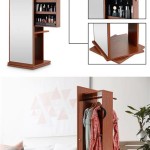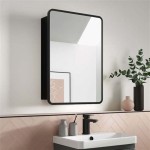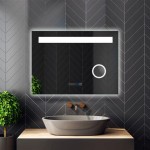How Does A Two-Way Mirror Work? - A Physics Lab Perspective
The concept of a two-way mirror, also known as a one-way mirror, or two-way glass, has captivated imaginations and found utility in various scenarios ranging from security surveillance to psychological observation. At its core, the functioning of a two-way mirror relies on relatively simple principles of optics and the manipulation of light reflection and transmission. However, the perceived "magic" of this device stems from the carefully engineered asymmetry in the lighting conditions on either side of the glass, coupled with its unique construction.
While often perceived as a mirror on one side and a window on the other, a two-way mirror is, fundamentally, a partially reflective mirror. It doesn't inherently possess different reflective properties on each surface. Instead, the effect is created by controlling the intensity of light on each side. The side with brighter illumination appears as a mirror, while the side with dimmer illumination appears as a window. This article will delve into the physics behind the two-way mirror, exploring its construction, the role of light intensity, and how these elements combine to create the illusion of unidirectional visibility. We will use a physics lab perspective to dissect the underlying principles.
Understanding how a two-way mirror operates requires grasping some fundamental concepts about light. Light can be described as both a wave and a particle (photon), and its interaction with matter involves a combination of reflection, absorption, and transmission. When light strikes a surface, some of it bounces back (reflection), some is absorbed and converted into heat or other forms of energy, and the remainder passes through the material (transmission). The proportions of reflected, absorbed, and transmitted light depend on the properties of both the light and the material.
Standard mirrors, like those found in bathrooms, are designed to reflect a high percentage of incident light. They typically consist of a sheet of glass coated with a thin layer of reflective material, such as silver or aluminum. This metallic coating is highly reflective, ensuring that most of the light hitting the mirror bounces back, creating a clear reflection. The glass serves primarily as support and protection for the reflective coating.
In contrast, a two-way mirror uses a much thinner and more delicate layer of reflective material. This layer is typically so thin that it allows a significant portion of the light to pass through, rather than just being reflected. It’s this partial reflectivity that allows the creation of the one-way viewing effect when lighting conditions are carefully managed.
The Role of Partial Reflectivity
The key difference between a standard mirror and a two-way mirror lies in the degree of reflectivity. A standard mirror is designed for almost complete reflection, while a two-way mirror is designed for partial reflection and transmission. This is achieved by controlling the thickness and composition of the reflective coating. The thinner the coating, the more light that can pass through. Typical two-way mirrors might have a reflectivity of around 50-75%, meaning that 50-75% of the light that strikes the surface is reflected, and the remaining 25-50% is transmitted.
Consider a physics lab where we can control the intensity of light shining on either side of a partially reflective glass panel. If we illuminate one side brightly and keep the other side dark, the brighter side will appear as a mirror. This is because the light reflected from the bright side overwhelms the small amount of light transmitted from the dark side. Conversely, the dark side will appear as a window because the light transmitted from the bright side, though partially reduced, is still significantly stronger than any light reflected from the dark side. The eye perceives primarily the brighter light source.
This effect is not due to any inherent directionality of the mirror itself. The partial reflectivity is a property of the material, not of its orientation. If the lighting conditions were reversed, the "mirror" side would become the "window" side and vice versa. This is a crucial point for understanding the physics involved. It is the *difference in illumination* that creates the perceived effect, not a fundamental asymmetry in the mirror's properties.
From a physics perspective, the ratio of the light intensities on each side of the two-way mirror is critical. A large difference in light intensity is required to effectively create the one-way viewing effect. If the light levels are similar on both sides, the mirror will appear partially reflective and partially transparent from both viewpoints, resulting in a blurry or distorted image.
The Importance of Light Intensity
The successful operation of a two-way mirror hinges on a significant difference in light intensity between the two spaces it separates. This intensity difference is the driving force behind the perceived asymmetry. To illustrate this, imagine two rooms separated by a two-way mirror. Room A has bright lights, while Room B is dimly lit. In Room A, a person sees their own reflection prominently. This is because the light from Room A reflects off the mirror's partially reflective surface, returning directly to the observer's eye. The amount of light transmitted from the dimly lit Room B is relatively small compared to the reflected light, rendering it almost imperceptible.
Conversely, in Room B, the observer sees through the "mirror" into Room A. This is because the light from the brightly lit Room A passes through the partially transparent surface to Room B. Although some of the light from Room A is reflected back, the amount of light transmitted is still significantly greater than any light reflected from the dimly lit Room B. Therefore, the observer in Room B primarily sees the image from Room A.
To maintain the effectiveness of the two-way mirror effect, it is essential to minimize any ambient light in the observation room (Room B). Any significant light source in Room B will reduce the light intensity difference and diminish the illusion. This is why observation rooms using two-way mirrors are often kept dark.
The quantitative relationship between light intensities can be expressed simply. Let $I_A$ be the light intensity in Room A (the brightly lit side) and $I_B$ be the light intensity in Room B (the dimly lit side). For the two-way mirror to function effectively, $I_A$ must be significantly greater than $I_B$. The larger the ratio $I_A/I_B$, the more pronounced the effect will be. In practical applications, this may involve adjusting the lighting levels to achieve a ratio of 5:1 or even 10:1 or higher.
Applications and Practical Considerations
Two-way mirrors are employed in a wide array of applications. Law enforcement uses them for interrogation rooms, allowing officers to observe suspects without being seen. Psychologists and researchers utilize them in observational studies, allowing them to study behavior in a controlled environment without influencing the subjects' actions. Retail stores often incorporate them as security measures to detect shoplifting.
Beyond the basic principles of reflectivity and light intensity, several practical considerations influence the effectiveness of a two-way mirror. The quality of the glass itself is crucial. Any imperfections or distortions in the glass can degrade the image quality and reduce the overall illusion. Similarly, the uniformity of the reflective coating is essential. An uneven coating can lead to variations in reflectivity across the surface, making the effect less convincing.
The angle of observation also plays a role. At extreme viewing angles, the effect of the two-way mirror may be diminished, and the observer may be able to see a faint reflection of themselves even from the dimly lit side. This is because the amount of reflected light increases as the viewing angle becomes more oblique.
Finally, it is important to note that the term "two-way mirror" is somewhat of a misnomer. As explained earlier, the mirror itself does not inherently possess different properties on each side. The effect is entirely dependent on the lighting conditions. A more accurate term might be "partially reflective mirror," as this emphasizes the key physical property that enables the illusion. It is the controlled manipulation of light, coupled with the unique construction of the mirror, that creates the convincing effect of one-way visibility.
The success of using two-way mirrors in any practical scenario also leans heavily on the psychological aspect. People on the brighter side of the glass often assume they are in a private setting due to the mirrored surface, even if they are vaguely aware of the possibility of observation. This assumption can lead them to behave naturally, revealing more information than they would otherwise. The ethics of using two-way mirrors, particularly in situations where individuals are unaware of being observed, is an important consideration.

How A Two Way Mirror Works

The Science Behind A One Way Mirror Primary School Tuition Smart Student
Do You Find The Terms One Way Mirror And Two Confusing Quora

The Two Way Mirror Helen Hare

4 7 Image Formation By Mirrors Douglas College Physics 1207

The Two Way Mirror Helen Hare

The Science Behind A One Way Mirror Primary School Tuition Smart Student

How Mirrors Work Explain That Stuff

Rotating Mirror Foucault S Measurement Of Light Sd Physics Stack Exchange

Mirrors And Images Physclips Light








